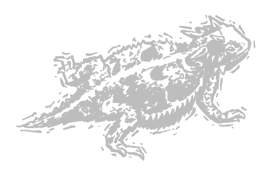Nongame Wildlife in the Texas Hill Country

The Texas Hill Country is home to very diverse wildlife communities, containing at least 407 game and nongame species. Even though a wide variety of nongame animals like bobcats, rabbits, and turtles may be hunted, many are not regularly harvested or collected.
The Hill Country is known by many as the "Deer Hunting Capitol" of the world, where many local economies depend on income associated with hunting (A 1996 report estimated Kerr County received $14 million annually through sales directly and indirectly related to deer hunting). Landowners are learning that they can acquire additional income from bird watchers and other outdoor enthusiasts after deer season closes. People from around the globe visit the Hill Country during spring bird migration hoping to see many species of neotropical migrants, including golden-cheeked warblers and black-capped vireos. This activity also contributes significantly to local economies. Believe it or not, there are many wildlife enthusiasts who also enjoy opportunities to see reptiles and other nongame species.
As mentioned on the Endangered Species webpage, the existence of many nongame species is threatened by changing land-use practices. Game species have characteristics that allow them to withstand more harassment. For example, game species tend to be more productive. A quail or turkey hen may lay 14 eggs each year, whereas warblers may lay only 3 or 4 eggs. Game and nongame wildlife often differ in mobility and tolerance of environmental changes. We often think of mourning dove as tree-nesting birds; however, they also nest on the ground in areas absent of trees. This is a good example of how game species are not so habitat specific, and can adapt well to changing environments. Having said that, there are limits! Quail seldom nest on the beach, or a golf course, or a coastal bermuda pasture. Species that once were hunted, are now endangered (e.g., Attwater's prairie chicken) because of hunting pressure combined with losses of suitable habitat. While hunting can be stopped immediately, habitat restoration and improvement may take decades. We must manage our natural resources responsibly, to benefit the entire ecosystem.
Some nongame species are good indicators of overall ecosystem health. Black-capped vireos are common on ranches with high plant diversity (both species diversity and structural diversity). Diversity equals productivity. The more diverse a site is, the more the ecosystem will benefit. Excellent black-capped vireo habitat is great for many other species of wildlife. The same can be said for bobwhite quail habitat. Rather than managing habitat for single species, focus on managing for communities. More on sound wildlife and range management.